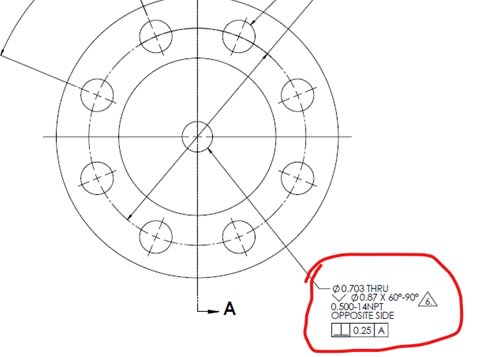MechEngineer2012
Mechanical
Hello All,
I kindly request your review of the attached drawing and appreciate your assistance in answering the following questions related to 2" 300 pound flange:
[ul]
[li]Could you provide the depth specifications for the threads and the through straight hole?[/li]
[li]What is the significance of the notation "60-90 degrees" and which specific angle does it represent?[/li]
[li]Please clarify the meaning of "opposite sides" in the context of the drawing.[/li]
[/ul]
Note 6 on drawing : NPT threads per 1.20.0& units are in inches.
Thank you in advance.
I kindly request your review of the attached drawing and appreciate your assistance in answering the following questions related to 2" 300 pound flange:
[ul]
[li]Could you provide the depth specifications for the threads and the through straight hole?[/li]
[li]What is the significance of the notation "60-90 degrees" and which specific angle does it represent?[/li]
[li]Please clarify the meaning of "opposite sides" in the context of the drawing.[/li]
[/ul]
Note 6 on drawing : NPT threads per 1.20.0& units are in inches.
Thank you in advance.

